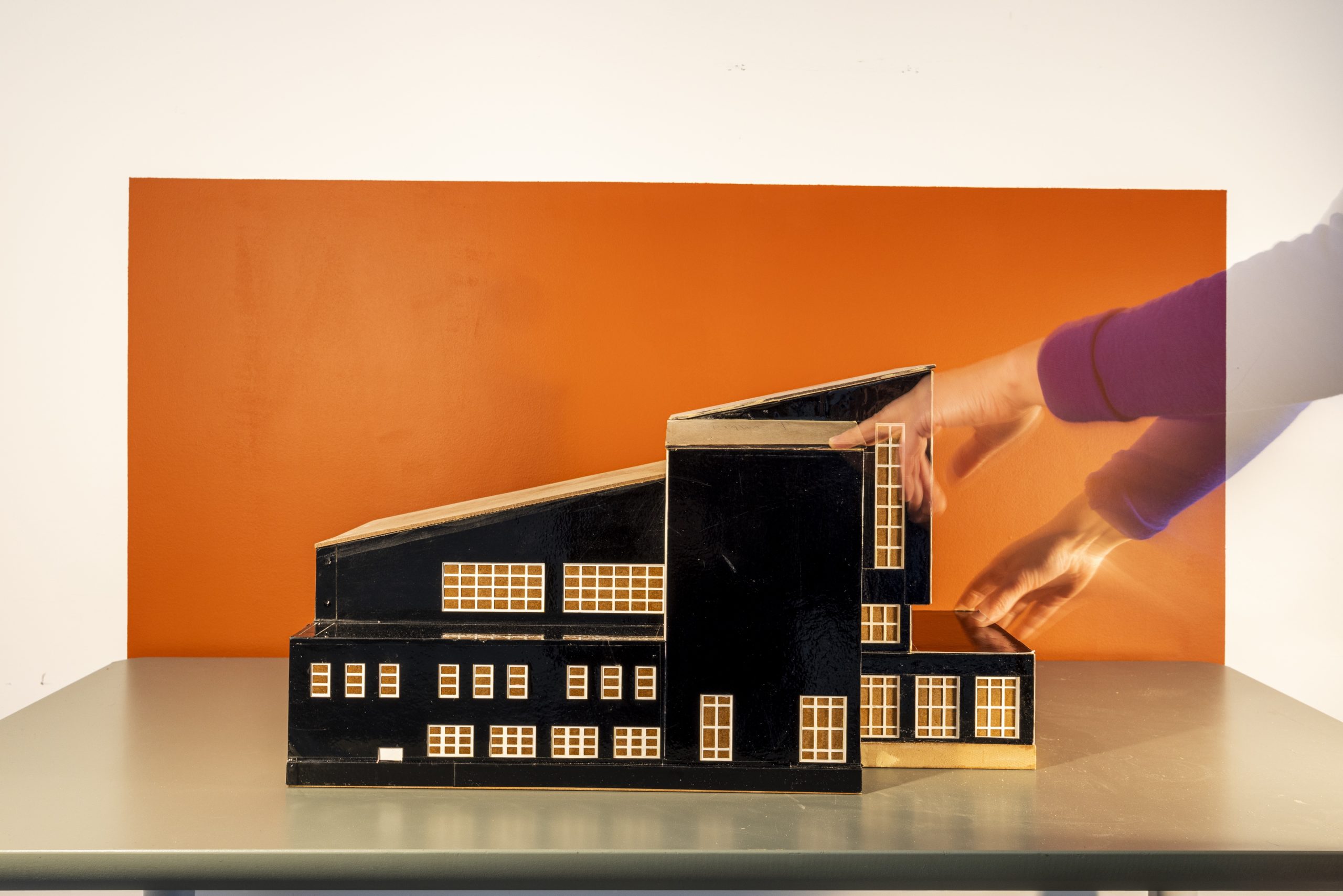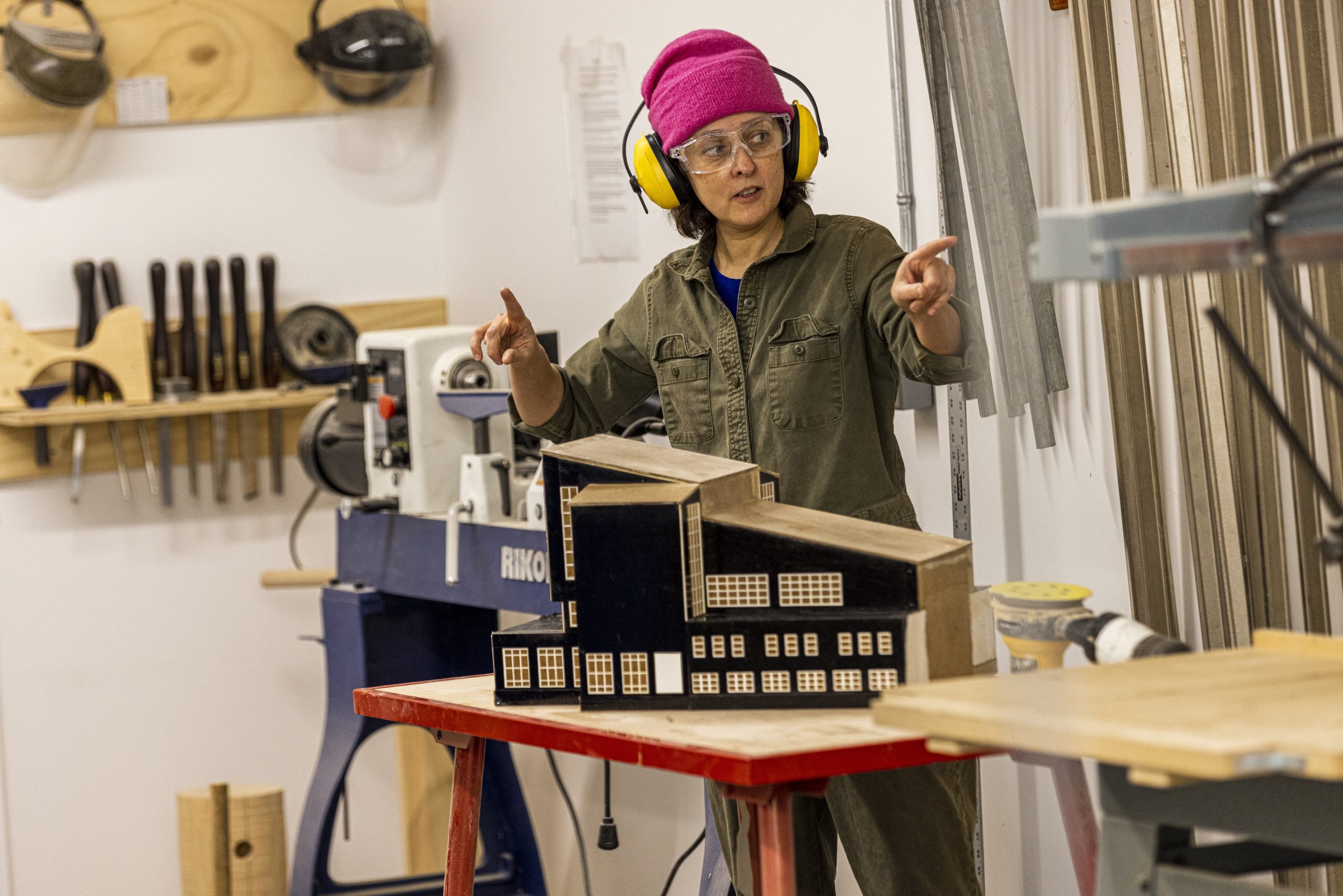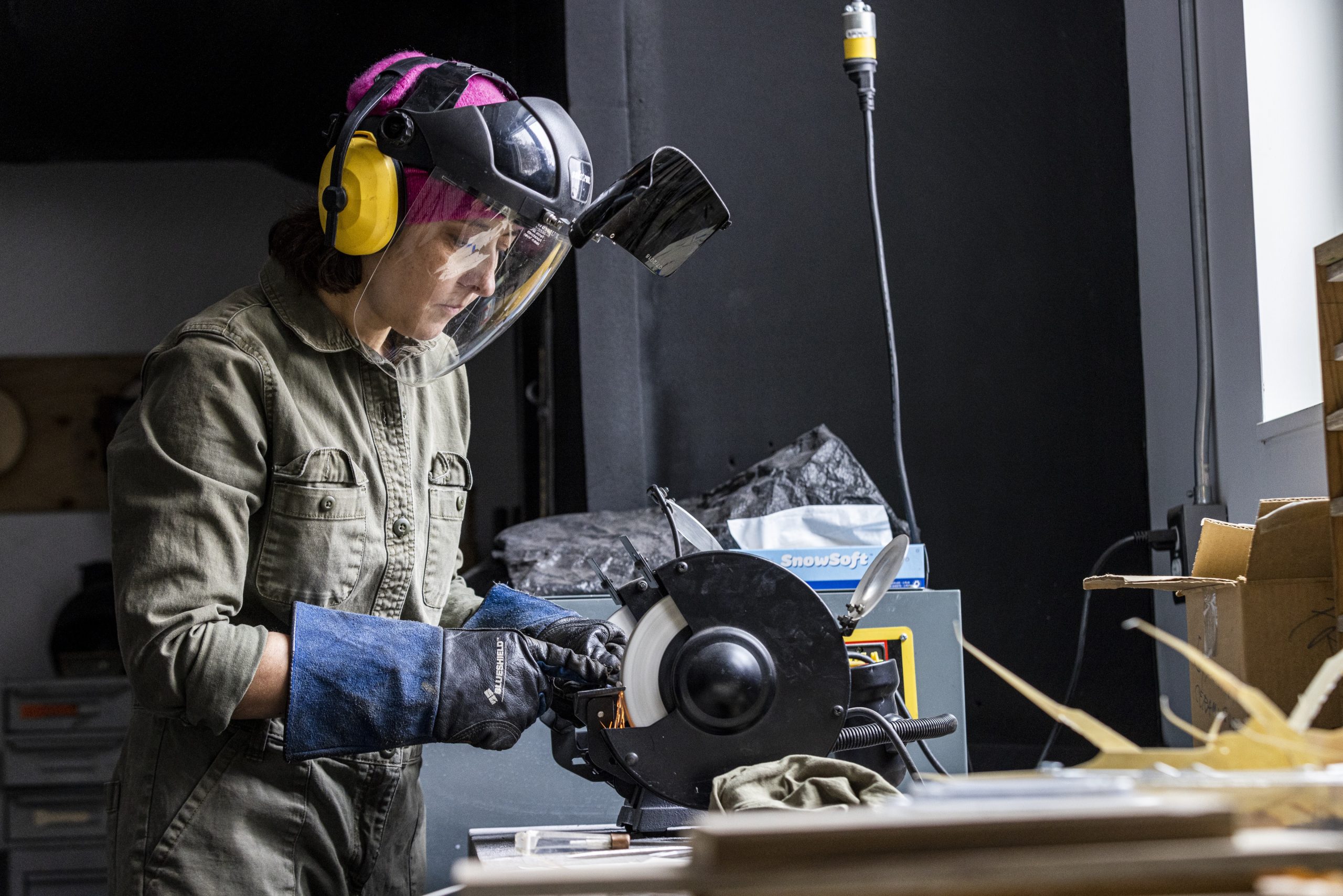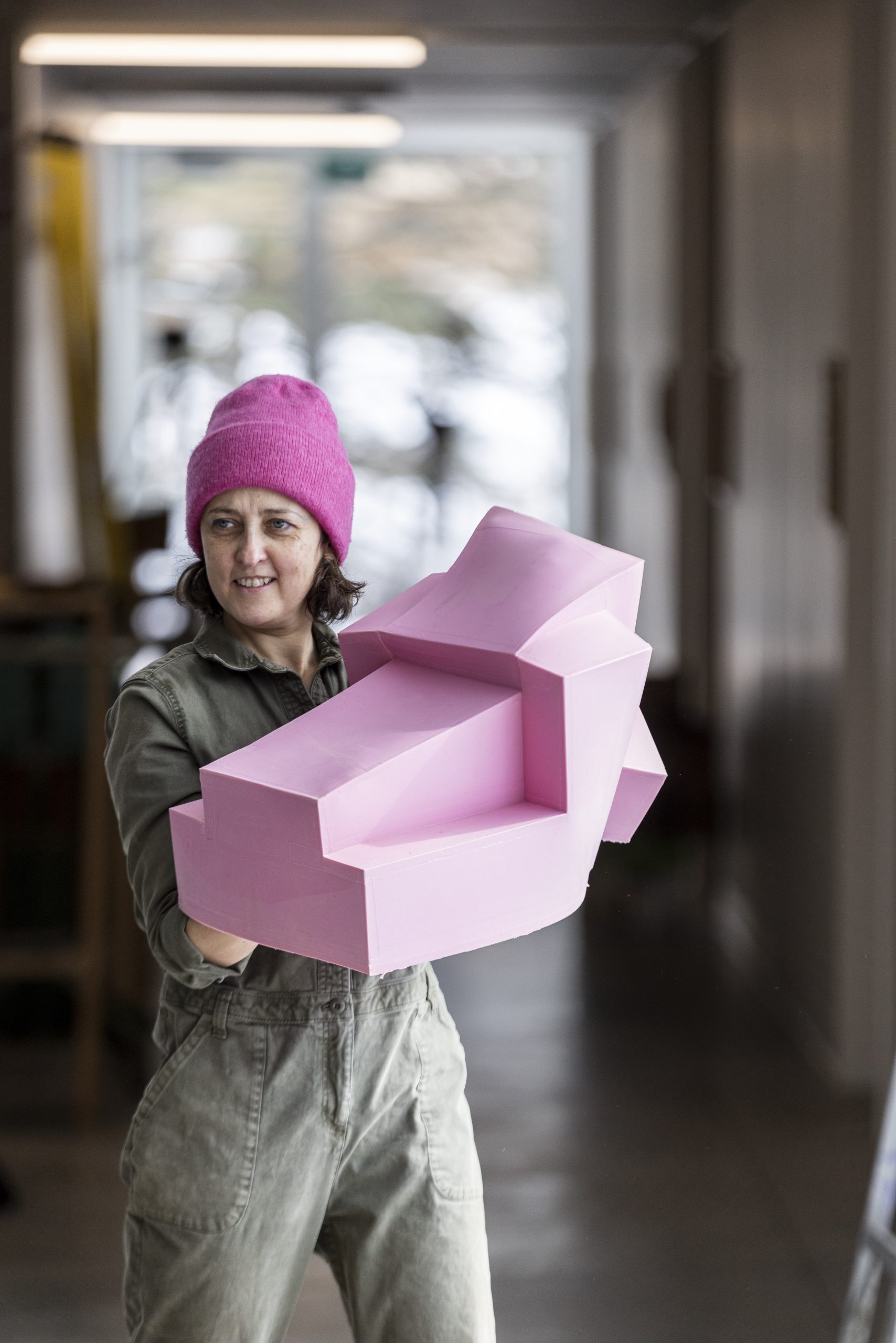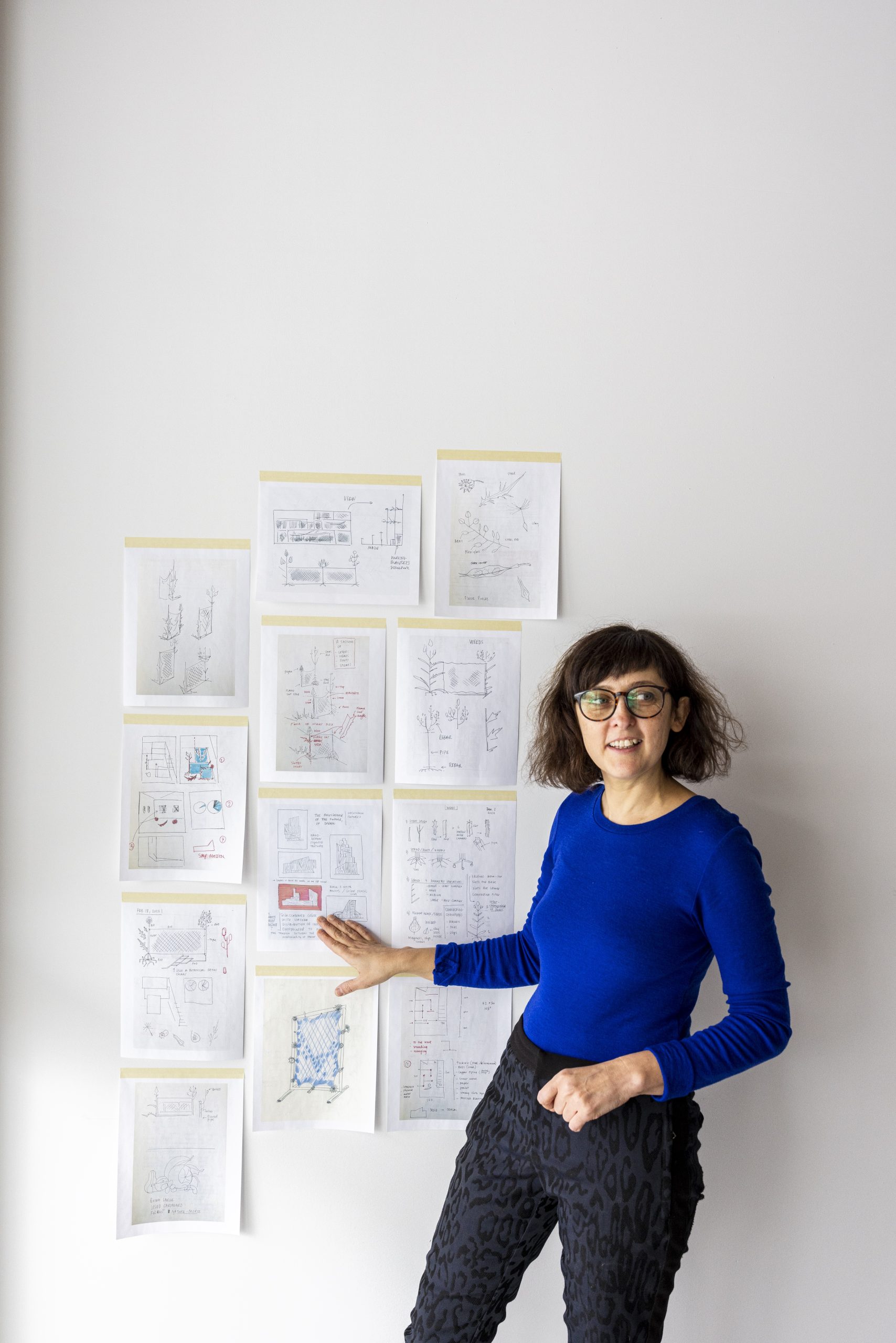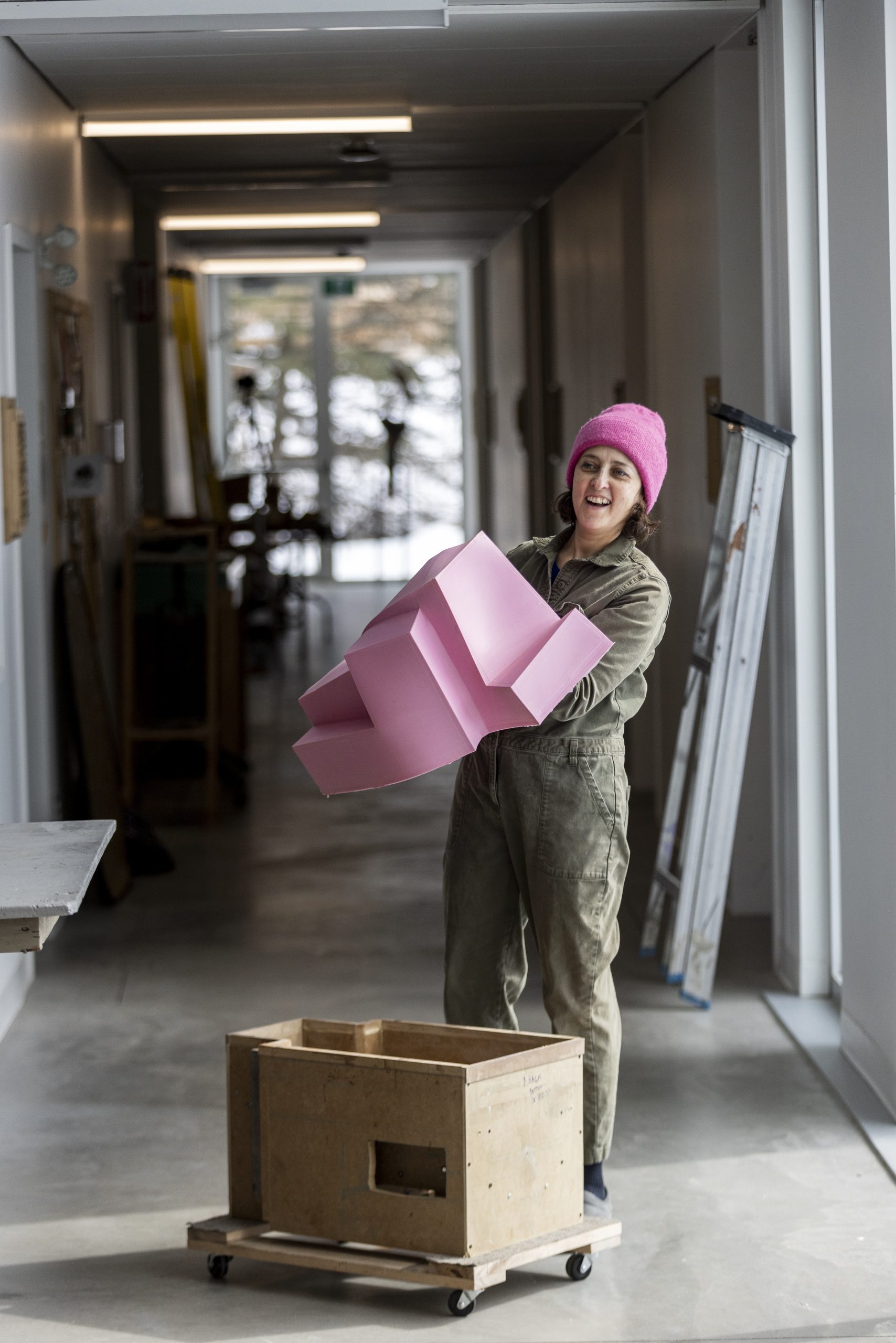Slinko
Testimony
Where and how a young person receives knowledge has a decisive influence on her or his intellectual and political path. For artists, these basic influences and social practices no doubt have a lasting impact on their practice. Born in Ukraine, Slinko has been living in the United States for many years. In her work she mobilizes a set of precise socio-historical references from a perspective closely linked to her journey from childhood to adulthood. From a family of Polish ancestry, she grew up in Bakhmut, in the Donbas region, then studied in Kharkiv. During the transitional period bridging from the twentieth to the twenty-first century, Russia’s direct influence was subsiding and distinct national identities were developing in the former socialist republics. Although Soviet propagandist educational techniques were no longer directly at work, they continued to affect Slinko’s academic career. For part of her art and design training, she attended school in a building inherited from the Soviet era; the structure’s communal architecture had once served the Young Pioneers, the youth wing of the Communist Party that was intended to develop a literary culture cleaving to the regime’s ideals.
During her residency at Est-Nord-Est, Slinko produced a model for a labour exchange, a sort of workers’ club devoted to popular education. Starting from the architectural form inherited from socialist governments, she produced a mould to be used for the fabrication of a reduced model of the building made of ice, a metaphor for the collapse – the melting – of political institutions and the liquidation of public assets as the USSR fell, but also an homage to an architectural type dedicated to education. During a trip to Santa Fe, New Mexico, Slinko had become interested in the importance of the campus, the site of collective learning, as she explored the remains of an art school designed around 1989 by the modernist architect Ricardo Ligorreta. Having shut down due to a lack of significant public support, the campus presented the dilemma of overly innovative institutions that sometimes fail, ruined by the attempt to renew forms.
In her studio, Slinko’s attraction to weeds was also in evidence. She produced metal cut-outs of these adaptable plants – rough, clever species that the seemingly omnipotent agrifood industry can neither eliminate nor make profitable. She also made large cyanotypes of grilles and barriers discovered during her walks in the region. Here, the intrinsic fragility of separations and borders – those that are wanted but also those imposed upon us or defended – is revealed. In her work, Slinko proposes a nonbinary reassessment of history, shrugging off a history of tension between blocs and seeking, rather, to humorously, intelligently deconstruct the productivist conceptual societal matrix of the perilous quest for eternal growth.
Biography
Slinko is a Ukrainian born multidisciplinary artist currently living in the United States. Slinko’s artistic practice is rooted in travel and research, and is largely informed by social sciences. In her work, Slinko investigates the effects and workings of power on society and individuals. Embracing her varied educational and cultural background, Slinko works across several disciplines, incorporating forms ranging from political satire and drawings, to moving image, performance, and fieldwork. Slinko sees her work as a mode of being in the world, a life-long study of everyday life and its contradictions. Her inspiration comes from interactions with ordinary people, and is informed by scholarship on labor, power, and capital.
Discover
Newsletter
Keep up to date with the latest news!
